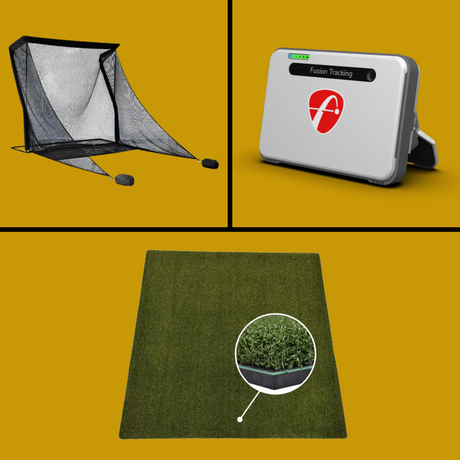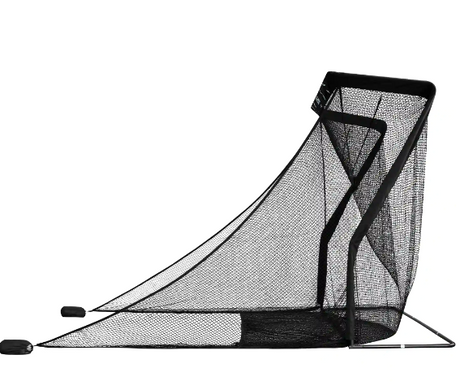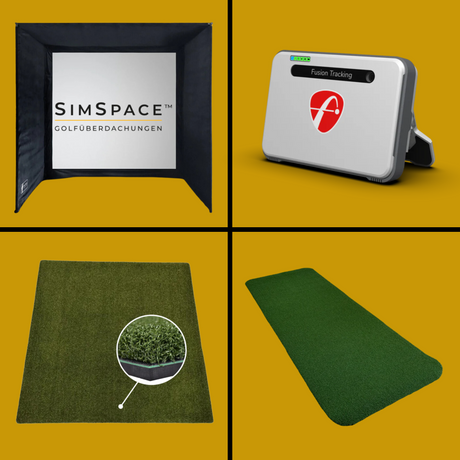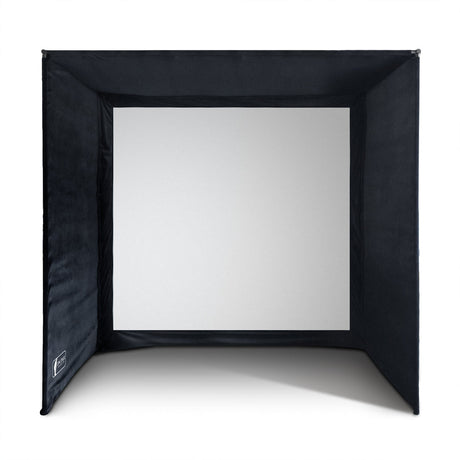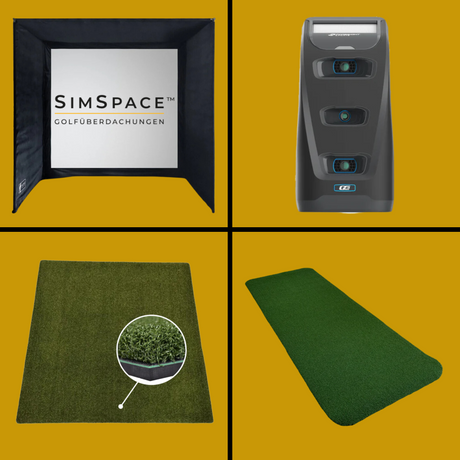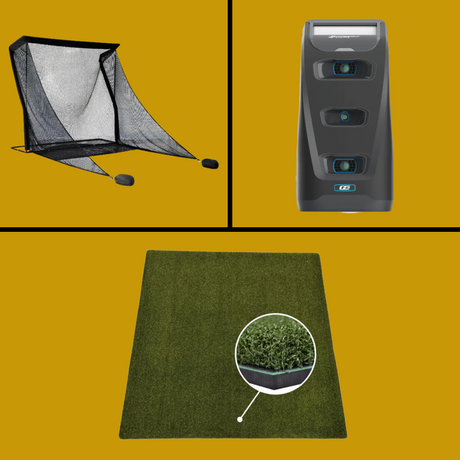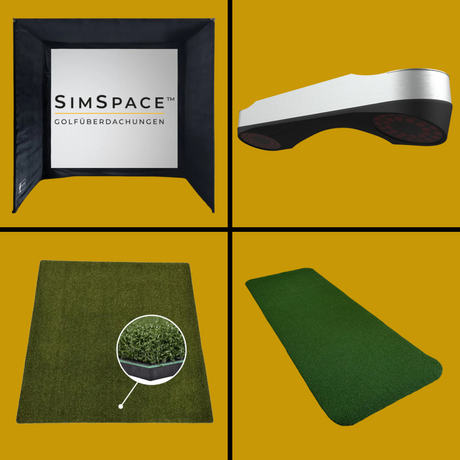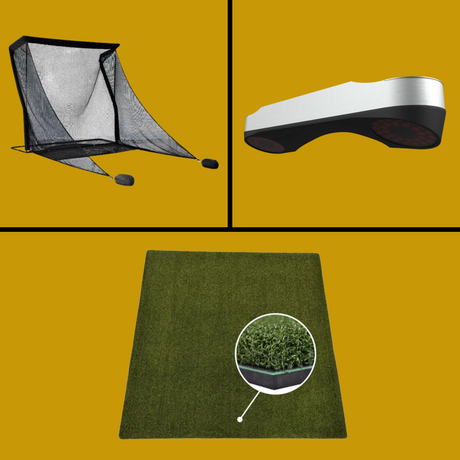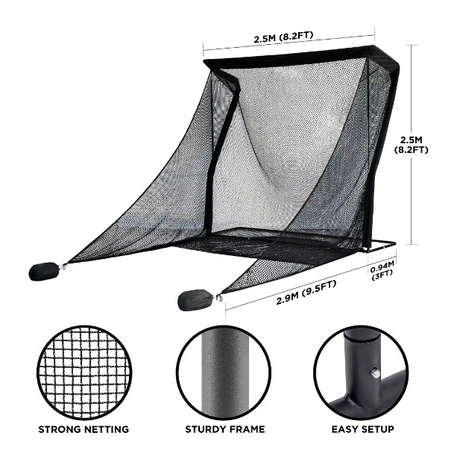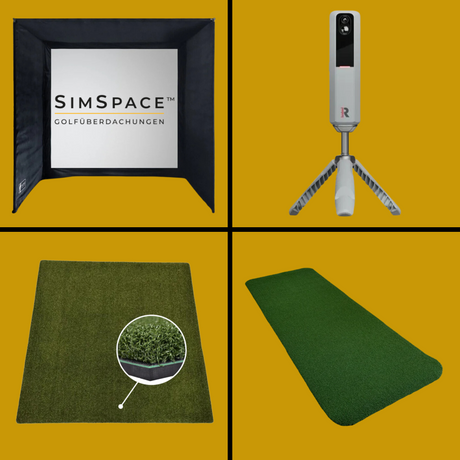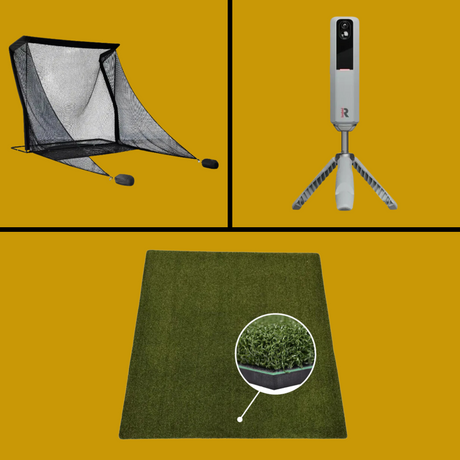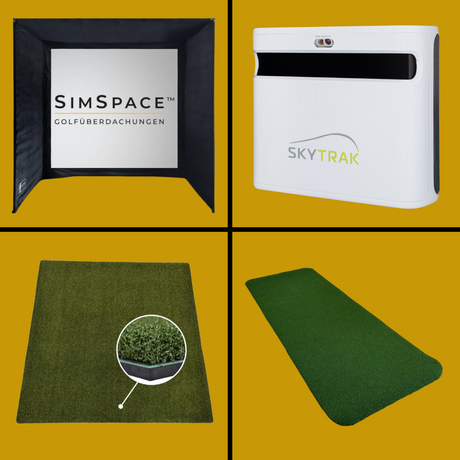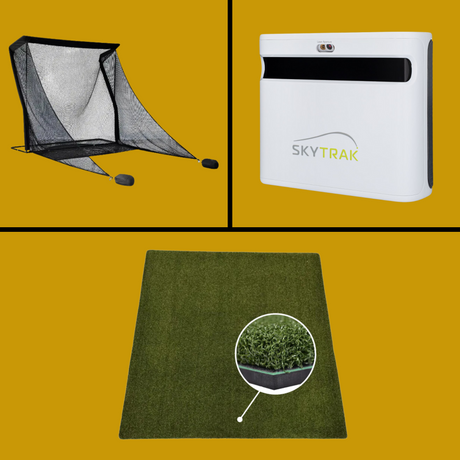A golf simulator is a great way to improve your golf game—from the comfort of your own home. This guide will tell you what to consider when buying one. From choosing a launch monitor to choosing the right teeing mat , we'll explain the most important factors.
Purchasing a golf simulator is a great way to take your golf game to the next level and practice anytime, regardless of the weather. Having your own golf simulator not only allows you to improve your game but also analyze detailed data about your swing and ball flight. However, before choosing a model, there are a few important points to consider. This guide will help you make the right decision and find the ideal golf simulator for your needs.
- Choosing the right golf simulator
There are different types of golf simulators on the market, varying in price, feature set, and accuracy. Generally, you should consider the following factors when choosing a golf simulator :
- Budget: Golf simulators come in a variety of price ranges. Consider in advance how much you're willing to invest. Entry-level simulators are more affordable, but may not offer the same accuracy and functionality as professional models. High-end simulators provide more precise data and offer a more realistic playing experience.
- Area of application: Do you play golf as a hobby or professionally? For recreational golfers, a simple golf simulator that provides basic data such as shot distance and ball flight is sufficient. Professionals, however, need a model with comprehensive data analysis such as spin rate, ball speed, and club angle.
- Available technology: Pay attention to the type of launch monitor used. Golf simulators are typically based on radar or camera technology. Both have advantages and disadvantages:
- Radar-based systems : They measure the ball flight and are particularly suitable for long hitting distances.
- Camera-based systems : These systems track the swing and ball flight using high-speed cameras and are particularly precise in capturing swing data.
- The right equipment
In addition to the actual golf simulator , you will need some additional components to create a complete setup for your golf training at home.
- Launch Monitor : A launch monitor is the heart of any golf simulator. It tracks your shots and provides important data such as ball speed, spin, launch angle, and shot distance. Popular brands include Flightscope , Trackman , Arcadia , SkyTrak , ProTee , Bravo , and Foresight Sports . These devices vary in price and feature set, so it's important to choose the right model for your needs.
- Golf net or golf booth : To prevent the ball from flying around the room, you need a high-quality golf net or golf booth . A sturdy net or booth will ensure the ball is safely caught, allowing you to practice undisturbed. Make sure the net is large enough to safely catch even high-speed shots.
- Projector and screen : For a realistic playing experience, you'll need a projector to project the image of the simulated golf course onto a screen. Alternatively, you can use a monitor if you prefer a more compact solution. Make sure the projector offers high resolution and brightness to ensure a clear and realistic representation of the golf course.
- Tee mat : A tee mat mimics the turf of a real golf course, providing an authentic feel when teeing off. Choose a high-quality tee mat that will withstand the wear and tear of repeated hits while still providing a good feel.
- Space requirements and spatial planning
An important consideration when purchasing a golf simulator is the available space in your home. Depending on the model, you will need a room with sufficient height, width, and depth to perform a full golf swing. Ideally, the room should have at least the following dimensions:
- Ceiling height : At least 2.6 to 3 meters so that you can swing with longer clubs such as the driver without touching the ceiling.
- Width : At least 3.5 to 5 meters to have enough space for your swing and equipment.
- Depth : About 4 to 6 meters, so that the ball flight can be safely recorded by the launch monitor and projected onto the screen.
Proper space planning is crucial for getting the most out of your golf simulator . If you're short on space, there are also more compact systems available that are ideal for smaller spaces.
Another important aspect when purchasing a golf simulator is the software. This determines how the golf course is displayed and offers various training modes and courses to choose from. Many providers offer a wide selection of world-famous golf courses for you to play virtually. Make sure the software is compatible with your launch monitor and offers features such as:
- Training modes : Practice specific shots, analyze your swing data, and work on weak points in your game.
- Golf course simulations : Play on virtual versions of famous golf courses like St. Andrews or Pebble Beach.
- Online competitions : Many golf simulators allow you to participate in online competitions or compete against other players worldwide.
- Customer service and warranty
When purchasing a golf simulator , you should also pay attention to the manufacturer's customer service and warranty terms. Good support is important in case technical issues arise or you have questions about setup. Look for long warranty periods to ensure your investment is protected.
Conclusion: The right golf simulator for your home
A golf simulator is a valuable investment that not only allows you to practice year-round but also provides detailed insights into your swing technique. To make the best possible choice, consider your budget, available space, required equipment, and desired accuracy. With the right selection and careful planning, you can sustainably improve your golf game and enjoy the golf experience at home.
Visit Golfsimulator1.com to discover the best golf simulators , launch monitors and accessories and get advice from our team of experts.


